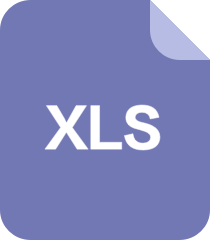《Excel VBA从入门到实战》示例文件

《Excel VBA从入门到实战》是一本专为学习Excel自动化和编程的读者设计的教程。Excel VBA(Visual Basic for Applications)是Microsoft Office套件中的一个强大的编程工具,允许用户自定义工作簿、工作表和图表的行为,提高工作效率,处理大量数据,以及创建复杂的宏。这本书的示例文件提供了丰富的实践案例,帮助读者逐步掌握VBA的基础和高级技巧。 在VBA中,我们首先需要了解基本的编程概念,如变量、常量、数据类型(如Integer、Double、String)、运算符和控制结构(如If...Then...Else、For...Next、Do...Loop)。这些基础知识是编写任何VBA代码的基础。通过本书的示例,你可以看到如何在实际的Excel环境中应用这些概念。 VBA还包含了Sub过程和Function函数,它们是执行特定任务的代码块。Sub过程用于执行一系列操作,而Function函数则可以返回一个值。在Excel VBA中,你可以创建模块来组织这些过程和函数,使得代码更加有序和易于维护。 在VBA中,我们可以操作Excel的对象模型,这是Excel所有功能和组件的编程表示。例如,Workbook对象代表Excel工作簿,Worksheet对象代表工作簿中的工作表,Range对象则代表单元格或单元格区域。通过这些对象,你可以读取和修改单元格的值,设置格式,甚至创建自定义的函数和公式。 文件名"Excel-VBA-Code"可能包含的示例可能涵盖了以下几个方面: 1. **事件处理程序**:学习如何响应Excel中的各种事件,比如打开工作簿、保存工作簿或单击按钮。这些事件处理程序可以让VBA自动执行特定任务,提升用户体验。 2. **用户界面增强**:使用VBA创建自定义的工具栏、菜单和对话框,让Excel具有更个性化的交互方式。 3. **数据处理**:通过VBA进行复杂的数据分析,包括排序、过滤、查找和替换等操作,这些通常比手动操作快得多。 4. **图表和图形**:VBA可以动态创建和修改图表,根据数据变化实时更新图表,实现数据分析的可视化。 5. **自动化报告**:利用VBA自动化生成定期报告,减少重复劳动。 6. **错误处理**:学习如何编写健壮的代码,通过错误处理机制捕获并处理可能出现的问题。 7. **文件操作**:读取和写入外部文本文件或CSV文件,实现数据交换和备份。 通过深入研究这些示例,你不仅可以理解VBA语法,还能学会如何将VBA应用于解决实际工作中的问题,从而成为Excel VBA的高手。不断实践和探索,你将能够自如地驾驭Excel VBA,创造出高效且智能化的工作环境。
 Excel-VBA-Code.rar (55个子文件)
Excel-VBA-Code.rar (55个子文件)  Excel-VBA-Code
Excel-VBA-Code  ch11
ch11  员工工资表.xlsm 72KB
员工工资表.xlsm 72KB ch10
ch10  商品销售统计.xlsx 11KB
商品销售统计.xlsx 11KB 笔记本销售清单--颜色区分.xlsx 15KB
笔记本销售清单--颜色区分.xlsx 15KB 笔记本销售清单.xlsx 11KB
笔记本销售清单.xlsx 11KB 工作簿1.xlsx 10KB
工作簿1.xlsx 10KB 第一季度笔记本销售统计.xls 29KB
第一季度笔记本销售统计.xls 29KB ch07
ch07  第7章 使用过程.txt 5KB
第7章 使用过程.txt 5KB 第7章 综合实战.txt 426B
第7章 综合实战.txt 426B ch12
ch12  编制市场调查问卷.xlsm 65KB
编制市场调查问卷.xlsm 65KB ch06
ch06  第6章 综合实战.txt 845B
第6章 综合实战.txt 845B 第6章 使用数组.txt 5KB
第6章 使用数组.txt 5KB ch16
ch16  员工工资表.xlsm 25KB
员工工资表.xlsm 25KB 员工考核表.xlsm 28KB
员工考核表.xlsm 28KB 录入报表信息.xlsm 35KB
录入报表信息.xlsm 35KB 员工头像
员工头像  2.jpg 37KB
2.jpg 37KB 1.jpg 3KB
1.jpg 3KB 3.jpg 3KB
3.jpg 3KB 4.jpg 24KB
4.jpg 24KB Thumbs.db 70KB
Thumbs.db 70KB 员工卡.xlsm 96KB
员工卡.xlsm 96KB ch17
ch17  员工薪金管理2.xlsm 43KB
员工薪金管理2.xlsm 43KB 员工薪金管理.xlsx 31KB
员工薪金管理.xlsx 31KB 员工薪金管理4.xlsm 66KB
员工薪金管理4.xlsm 66KB 员工薪金管理1.xlsm 42KB
员工薪金管理1.xlsm 42KB 员工薪金管理3.xlsm 52KB
员工薪金管理3.xlsm 52KB ch15
ch15  VBA导出页面文件.htm 4KB
VBA导出页面文件.htm 4KB 员工信息.txt 191B
员工信息.txt 191B 导出工作表.htm 19KB
导出工作表.htm 19KB 日志记录.txt 72B
日志记录.txt 72B 导出销售数据.txt 546B
导出销售数据.txt 546B 四月份销售部工资管理.xlsm 18KB
四月份销售部工资管理.xlsm 18KB 销售部全年记录.xlsm 20KB
销售部全年记录.xlsm 20KB 三月份销售部工资管理.xlsm 30KB
三月份销售部工资管理.xlsm 30KB 将文本导入工作表.xlsm 23KB
将文本导入工作表.xlsm 23KB 使用FileDialog对象.xlsm 21KB
使用FileDialog对象.xlsm 21KB 显示文件列表.xlsm 27KB
显示文件列表.xlsm 27KB 记录Excel日志.xlsm 12KB
记录Excel日志.xlsm 12KB 综合实战——动态创建文件.xlsm 42KB
综合实战——动态创建文件.xlsm 42KB ch18
ch18  企业收支管理.xlsx 49KB
企业收支管理.xlsx 49KB 企业收支管理.xlsm 74KB
企业收支管理.xlsm 74KB ch13
ch13  编写自定义函数.xlsm 19KB
编写自定义函数.xlsm 19KB 修改工作表名称.xlsm 17KB
修改工作表名称.xlsm 17KB 人民币大写转换.xlsm 17KB
人民币大写转换.xlsm 17KB 计算个人调节税的自定义函数.xlsm 16KB
计算个人调节税的自定义函数.xlsm 16KB 按颜色求和与计数.xlsm 19KB
按颜色求和与计数.xlsm 19KB 计算奖金的自定义函数.xlsm 18KB
计算奖金的自定义函数.xlsm 18KB ch04
ch04  第4章 VBA基础.txt 443B
第4章 VBA基础.txt 443B ch14
ch14  2012年第一季度商品需求量及销售情况分析.xlsm 30KB
2012年第一季度商品需求量及销售情况分析.xlsm 30KB 笔记本销售数据表.xlsm 11KB
笔记本销售数据表.xlsm 11KB 新建 Microsoft Excel 工作表.xlsm 30KB
新建 Microsoft Excel 工作表.xlsm 30KB ~$笔记本销售额记录表.xlsm 165B
~$笔记本销售额记录表.xlsm 165B 笔记本销售额记录表.xlsm 22KB
笔记本销售额记录表.xlsm 22KB 笔记本销售明细清单.xlsm 26KB
笔记本销售明细清单.xlsm 26KB ch05
ch05  第5章 综合实战.txt 918B
第5章 综合实战.txt 918B 第5章 程序控制结构.txt 6KB
第5章 程序控制结构.txt 6KB- 1
- 粉丝: 4730
- 资源: 10
 我的内容管理
展开
我的内容管理
展开
 我的资源
快来上传第一个资源
我的资源
快来上传第一个资源
 我的收益 登录查看自己的收益
我的收益 登录查看自己的收益 我的积分
登录查看自己的积分
我的积分
登录查看自己的积分
 我的C币
登录后查看C币余额
我的C币
登录后查看C币余额
 我的收藏
我的收藏  我的下载
我的下载  下载帮助
下载帮助

 前往需求广场,查看用户热搜
前往需求广场,查看用户热搜最新资源
- 白色大气风格的室内装修设计网站模板下载.zip
- 白色大气风格的手机电脑商城模板下载.zip
- 白色大气风格的手机软件公司html5模板下载.zip
- 白色大气风格的手机端HTML5企业网站模板.zip
- 白色大气风格的水疗按摩网页模板下载.zip
- 白色大气风格的双屏个人主页模板.zip
- 白色大气风格的数据研究公司模板下载.zip
- 白色大气风格的探险文化企业网站模板下载.zip
- 白色大气风格的投资企业CSS3网站模板.zip
- 白色大气风格的投资网站CSS3模板.zip
- 白色大气风格的图片设计类网站模板下载.zip
- 白色大气风格的网上购物CSS3整站网站模板.zip
- 白色大气风格的土建设计公司模板下载.zip
- 白色大气风格的纹身企业网站模板.zip
- 白色大气风格的温馨舒适家具bootstrap模板.zip
- 白色大气风格的五星级酒店集团模板下载.zip


 信息提交成功
信息提交成功
- 1
- 2
- 3
- 4
- 5
前往页